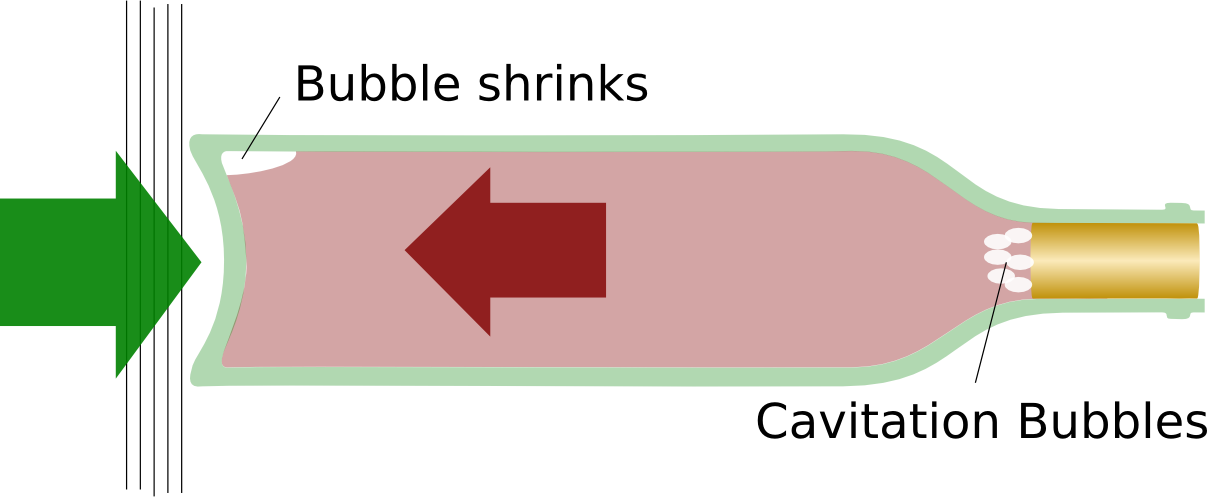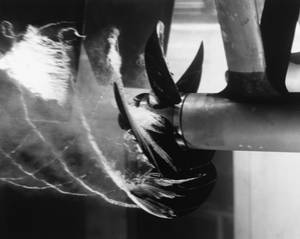Opening a bottle of wine without a corkscrew
Ingredients
A bottle of wine
A wall
A book, newspaper, or even a shoe
Instructions
The idea in the videos is to hit the bottle firmly but not hard against a wall obviously without breaking the bottle. So the bottle is protected by a book, some newspaper or even a shoe. The bottle should hit the wall with its base parallel to the wall.
There is always a risk that the bottle may break especially if it doesn't hit straight.
Result
With the right knack, the cork starts to move out of the bottle.
There is a slightly surprising noise, which seems to be coming from the neck of the bottle instead of the point it strikes the wall, and the wine goes milky due to the production of millions of tiny bubbles.
Explanation
This effect seems to be down to a process know as cavitation. Moving the bottle towards the wall causes the wine to slosh to the back of the bottle, pushing the bubble to the front.
 | As you accelerate the bottle the wine is left behind and pushes the bubble to the front. |
 | When it hits the newspaper, the bottle stops very quickly, and the wind carries on going. |
 | The wine moving forward compresses the bubble at the front of the bubble. This produces such a low pressure at the back that a bubble forms, filled only with water vapour. |
 | The wine is then pushed back very rapidly as this bubble collapses. It slams into the cork and pushes it out slightly with each collapse. |
When the bottle hits the wall the wine tries to carry on, this compresses the bubble slightly, and produces an extremely low pressure next to the cork.
This low pressure causes bubbles - cavities - to form, but they are just filled with water vapour, so they are very unstable and the pressure pulls the wine back again
As the cavities collapse the wine slams into the back of the cork pushing it out.
The cavities also contain a little bit of dissolved gas so they don't quite collapse entirely, and leave behind the minute bubbles which make the wine look milky.
Cavitation in engineering
Cavitation is a very important subject for naval architects, as a propeller produces a low enough pressure to form these cavities, they can collapse near the propeller, and this collapse can be very violent, blowing lumps out of the propeller which create pits. These reduce the efficiency of the propeller, and can eventually cause it to fail.
 |  |
|---|---|
| A propeller cavitating | Damage done to a turbine due to cavitation. |
- Previous Slow waves
- Next Losing Air










Comments
Add a comment